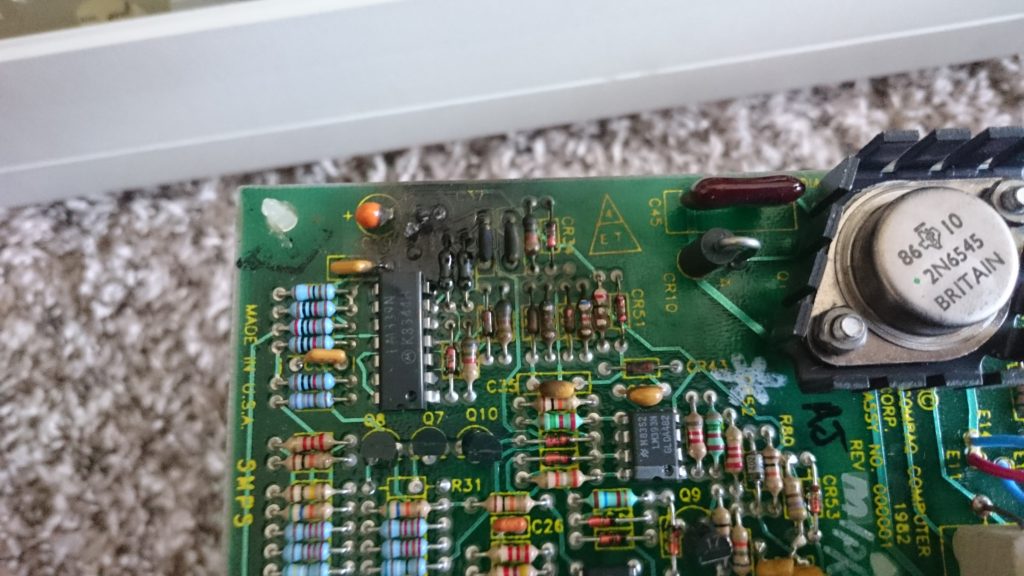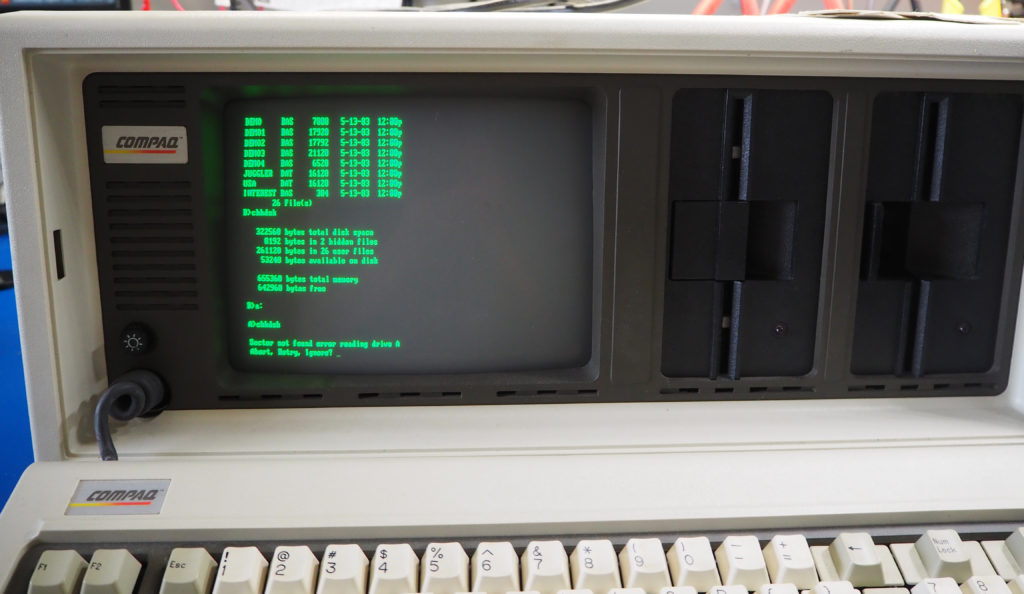The Compaq Portable was one of the world’s first 100% IBM PC compatible computers, and definitely one of the first real “portable” computers. It’s not really portable by today’s standards as it is nearly 30lbs, but in 1983, it was groundbreaking. A co-worker posted one for sale on a company bulletin board as non-working. He bought it new when it was first released, and hadn’t powered it on until just recently. When he did, there was apparently a loud noise and smoke followed.
The problems
Working on old irreplaceable equipment is always a little daunting. Parts availability can be questionable or non-existent, and it’s easy to get in over your head on how far a restoration should go. In this case, I decided that I would restore the system back to working order, but would not go as far as a complete cosmetic restoration. I love vintage hardware, but there are others much, much more dedicated and knowledgeable to preserving these historical artifacts than I am.
I disassembled the entirety of the unit including the CRT. The issue that the previous owner ran into was easy to spot: a tantalum capacitor had shorted and exploded on the power supply board.

After cleaning the surrounding area, it appeared that no other components were damaged, at least from what I could tell visually. Given tantalum capacitors’ propensity to fail in this manner, and the age of the system, I decided it would be justifiable to replace all of them.
Additionally, the keyboard used capacitive foam & foil discs that had long since disintegrated. Luckily, many other vintage systems used similar keyboards (made by Keytronic) so replacements are available.
The repairs
Replacing the tantalum capacitors was straightforward. Before replacing the keyboard foil discs, I slowly powered the system on using a variac and dim bulb tester. After ensuring voltages were at the expected values, I slowly increased the variac to maximum voltage. The system booted!
Since the system was now working, I went to work on replacing the keyboard discs. This wasn’t a fun or interesting job, but about an hour later, I had a working, usable system on hand.

The 5.25″ drives seem to have a little trouble reading the included MS-DOS (version 1.11!) diskettes. I did not attempt any further repair, as I had mostly accomplished what I set out to do, and I did not want to risk damaging these diskettes.